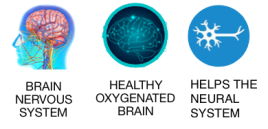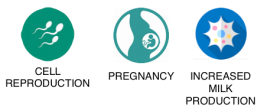MORINGA’S HISTORY
It was used extensively in traditional medicine practices like Ayurveda medicine for over 4,000 years. Moringa oleifera is a fast-growing, drought-resistant tree.
Moringa has gained a reputation for fighting inflammation and combating various effects of malnutrition and aging, earning the nickname “the miracle plant.”
The Moringa Tree is a perennial tropical tree and native to the south of the Himalayan Mountains in northern India. It was consumed not only for its nutritional values but also for its medical benefits
In India, it was used in traditional Medicine for 300 conditions ranging in severity from minor skin blemishes to more serious illnesses like asthma, high blood pressure, and heart disease, ulcers, and kidney stones, as well as respiratory illnesses like Tuberculosis.
From India, it spread to ancient Egypt, where it was used as a natural sunscreen to protect against the harsh desert environment.
Eventually, it made its way to Greece and Rome where it served an important role as both an ointment and expensive perfume.
The progress of the plant also moved westward into Southeast Asia and the Pacific Islands (most notably the Philippines), where its unique nutritional qualities caused it to become a staple vegetable in the local diet.
Today, Moringa is cultivated around the world, primarily in poorer regions with harsh climates where the many uses for Moringa are needed most—places like Ethiopia, Haiti, Ghana, Honduras, Indonesia, and Uganda.
My husband and I reintroduced this tree in Nigeria and Haiti. Generations later, these people had forgotten the nutritional benefits and would use it as fencing for boundary lines between properties. They didn’t know what they were missing. They had free health food and medicine.
It was used extensively in traditional medicine practices like Ayurveda medicine for over 4,000 years. Ayurveda is a 5,000 year-old system of natural healing that’s truly stood the test of time.
Moringa has gained a reputation for fighting inflammation and combating various effects of malnutrition and aging, earning the nickname “the miracle plant.”
The Moringa tree has many names known around the world:
![]()
-
-
-
- A Supermarket on a tree
- A Miracle tree
- Natures Medicine Chest
- The Queen of Green
- The Multi-Vitamin Tree
-
-
God gave us every tree for our food as stated in Genesis 1:29-30. All of the trees were made by God in the beginning on day three.
Although every part of the Moringa tree has nutritional benefits, we will be discovering the benefits of the Moringa tree leaf. Like all fruits, vegetables, and herbs and spices, each ingredient is already measured properly for this purpose. Moringa is packaged with whole natural ingredients that God made and contains the tools necessary to do the jobs that will benefit, improve, and maintain a person’s health.
 Moringa Oleifera is an all-natural, inexpensive, and accessible multi-vitamin. It is grown in the green highlighted areas. If you live within this area, you can consider yourself blessed to have this wonderful tree growing in your area.
Moringa Oleifera is an all-natural, inexpensive, and accessible multi-vitamin. It is grown in the green highlighted areas. If you live within this area, you can consider yourself blessed to have this wonderful tree growing in your area.
![]() NUTRITIONAL PROFILE
NUTRITIONAL PROFILE

- Vitamins B1 and B2 convert carbohydrates into energy.
- Vitamin B3 breaks down carbohydrates, fats, and proteins.
- Vitamin B6 helps your digestive system process proteins.
 TEA TIME
TEA TIME
It detoxifies the human body and even supports in strengthening their immune
system. Skin health can also be improved by consuming this tea on a regular basis. Now, let us have a look at the amazing benefits of moringa tea.
this tea on a regular basis. Now, let us have a look at the amazing benefits of moringa tea.
SUPERSTARS

Anti-infectious, Antibacterial, Antifungal, and Anti-inflammatory
 The Doctor within, Dr. White Blood Cell, called leukocytes, are a type of blood cell that helps fight infections. Vitamin C is a major resource for Dr. White Blood Cell to work.
The Doctor within, Dr. White Blood Cell, called leukocytes, are a type of blood cell that helps fight infections. Vitamin C is a major resource for Dr. White Blood Cell to work.
Isothiocyanate compounds were reported to exhibit hypotensive, anticancer, and antibacterial activities in our body.
Found back in the late 1940s, an anti-fungal property was found back in the late 1940s. It has a compound called pterygospermin, assimilates of glutamic acid, and has powerful antibacterial and fungicidal effects, which is present in several species of moringa.
Antioxidants quercetin and kaempferol showed good activity on hepatocyte (liver cell) growth factor (HGF). Moringa seeds are superior to radical scavenging (Ogbunugafor et al., 2011).
Anticancer (Phytochemicals) Benzyl isothiocyanate which is found in Moringa leaves can prevent cancer cells in our body. It contains a simple sugar called rhamnose, and unique group or glucosinolates and isothiocyanates which categorized as hypotensive, anticancer, and antibacterial activities.
MEDICINAL USES
Analgesic – a significant amount of analgesic activity was observed (Rao et al., 2008).
Antipyretic – Reduction of fever
Antihypertensive – lowers blood pressure safely
PROFILE
Antifertility problems seem to be active only in the root.
Moringa leaf extracts were found to be 100% abortive with doses equivalent to 175 mg/kg of starting dry material = 11 Tblsps. (Nath et al., 1992).
Moringa tree bark and roots are not recommended for human consumption.
A handful of fresh Moringa or a Tablespoon of dry Moringa is fine.
PHYSIOLOGICAL BENEFITS OF MORINGA
Strengthen the Immune System (C, A, E, B6)
Moringa leaves help to boost the immune system about 10x more than the commercially-made vitamins and other supplements.
Fights Fungal Infections, Viruses (C)
- Vitamin C has a simple but very potent acid that kills viruses (Herpies, Measles, Mumps, Polio, sleeping viruses-viruses waiting to be awakened through special circumstances), fungus, bacteria, tetanus, tuberculosis.
- It activates a reaction within the cell and behaves like peroxide and destroys whatever is not welcome.
- Vitamin A protects “entry points” into the body. If they do find an entrance the white blood cells fight against infection once inside the body.
Improves Brain Function (B1,B2,B3,B9,C,Ca,K,Mg)
- Helps blood vessels relax blood flows more freely exciting neural activity and increasing cognitive function.
- A healthy brain allows more oxygen to reach the brain. Moringa’s ORAC value contributes a healthy brain allowing more oxygen to reach the brain.
- Potassium – helps normal brain function by allowing more oxygen to reach the brain-stimulating memory function and the brain nervous system. This is done by helping blood vessels relax and blood flows freer.
- Protein helps you think clearly and remember things.
- Rich source of the amino acid tryptophan, moringa supports neurotransmitter functions, including those that produce the “feel good” hormone serotonin.

- Protein improves your mood and increases your resistance to stress, anxiety, and depression.
Nervous System (Ca)
- Potassium is an electrolyte (minerals that give electric charge – like power lines with a current that runs through) that helps regulate body fluids for good nerve impulses. In other words, Calcium communicates messages to the nervous system to help maintain proper pressure in the smooth muscles of the arteries.
- Helps control fluid in the body. Calcium is the main mineral that is used to neutralize acids and to maintain the proper pH body fluids throughout the body.
May Inhibit Cancer Growth (A,B6,C,E)
- Treatment of prostate

- Treatment of Skin cancer
- Can prevent against breast cancer cells and activities of cancer growth
- Can heal the tumor
Relieves Headache (A)
Moringa leaves are not only used for serious illness but also used to treat other diseases such as headache whereby the leaves through by vitamin A fried-leaves are useful for cold and fever while Vitamin C in the juice of its leaves is used in cases of headache.
10. Chronic Eye Diseases (A,C) 
Moringa gives eyes the ability to distinguish light from dark, so it promotes night vision and the ability to see colors. It fights against glaucoma and other age-related eye diseases.
Muscles (C)
-
- Moringa leaf juice is also applied in the eye in fainting fits due to nervous debility.
- Vitamin E in Moringa leaves can strengthen muscle weakness including eye muscles.
- Moringa vitamins and minerals are essential for preventing general micronutrient disorders.

Conjunctivitis (Different methods to use moringa leaves for the eye.
Pain in eyes; Eye allergy; Eyes inflammation; Redness in eyes;
Helps prevent Cataracts. It is important for the eye lens. It decreases the risk of lens hardening, loss of flexibility, and promotes healthy blood vessels in the eye.
Extract fresh leaves juice and mix with honey and use it as an eye drop or apply on eyelids.
Moringa leaves juice is useful in treating different chronic eye diseases.
Anemia
- Proteins are used for the production of hormones (regulate the activity of certain cells or organs and control behavior and mood), enzymes (produce life), and neurotransmitters (communicate signals and messages), and produces energy.
- It is used to treat anemia
Blood Pressure/Stroke (A, B1-3-6, C, K, Ca, Fe, Protein)
Moringa has a stabilizing effect on blood pressure.
- Potassium controls blood pressure and reduces the risk of stroke.
- Potassium neutralizes various acids to help retain and preserve calcium. 1% of Calcium is also found in the blood.
- Potassium slows the negative effects of sodium and maintains a healthy blood pressure balance.
- This further helps with normal blood pressure and protects the functioning of the heart.
- With sufficient amounts of Calcium, the cardiac muscles to contract and relax properly.
Fertility
Vitamin A works to create new cells as well as promote fertility. Moringa is used to increase woman’s milk production – Experts agree moringa leaves or pure moringa leaf powder is not only extremely beneficial for pregnant women, but also for women expecting to breastfeed. Moringa leaves are safe and beneficial for everyone, especially pregnant women! Moringa leaves are not toxic.
A teaspoon full is ok at a time and three times a day is recommended.
Produce more Milk for Breast-feeding
Breast-feeding mothers need to give the best milk for their babies in order to prevent malnutrition. Natural nutrition of breast-feeding can produce more milk if the mothers consume Moringa leaves.
Diabetes
Moringa is believed to control glucose levels in cases of diabetes
Detox & Digestion
Moringa helps to boost liver function, therefore detoxifying the body of harmful substances, such as heavy metal toxins. It might also be capable of helping fight the following:
- kidney stones
- urinary tract infections
- constipation
- diarrhea
Studies reflect that moringa tea is helpful for dealing with gastrointestinal problems. Its stimulating effect over metabolism helps the body to burn calories at a faster pace
Heal Ulcers
Another benefit of Moringa leaves is proved in healing ulcers or gastritis. The amino acid histidine of Moringa can be used in healing ulcers and glutamic acid.
 Restores Skin Conditions (C)
Restores Skin Conditions (C)
- A skin problem is of primary interest in women or men. Moringa leaves are very useful for skin care.
- Eating fresh and young Moringa leaves can reduce skin problems such as irritated skin and reddened skin.
- The seed oil is also the main agent to prevent inflammatory.
- It is used as a skin antiseptic
Skin is the mirror of one’s health. When the digestive and excretory system of a body functions properly, its effect can be visualized from the skin. The skin becomes healthier to look at and turns to be flawless day by day
- Vitamin C helps the body make collagen which helps heal bleeding gums, loss of teeth for healthy teeth and gums, and bleeding under the skin.
- Vitamin C assists the skin in wound healing faster and better. It also limits sun damage.
- Protein helps maintain healthy skin, nails, and hair. Hair becomes lively, shiny, glossy with the proper intake of nutrients. The nutrients present in this tea enhance the proper growth of hair.
- Vitamin A helps retain moisture in the skin while at the same time protects against skin diseases like psoriasis, acne, wrinkles.
- Fluid retention/edema
A poultice is made from leaves and applied to reduce glandular swelling
 Lowers Cholesterol Levels (B3,B6)
Lowers Cholesterol Levels (B3,B6)
- Vitamin C helps circulation.
- Circulation prevents cholesterol from leaving sediment on the artery wall and keeps the lining of the arteries strong and healthy.
- Vitamin C has been known to lower blood pressure by relaxing blood vessels so more blood can flow freely.
Thyroid Health (C)
- Vitamin C promotes thyroid health by reducing the oxidative stress placed on the gland either by foreign toxins and harmful free radicals or from the reactive oxygen species produced during the syntheses of thyroid hormones.
- Rich in antioxidants and compounds that may improve thyroid health, which makes it beneficial for maintaining high energy levels plus fighting fatigue, depression, low libido, mood swings, and insomnia.
Eases Inflammation (A,B1,E,Mg)
Treat Rheumatism, Arthritis, and Joint Pains
-
- Moringa is known as a useful medicine to heal aching muscles and treat inflammations associated with rheumatism, arthritis, and joint pains.
- Moringa is effective to reduce rheumatism since it has amino-acid histidine used in the treatment of rheumatoid arthritis. Moringa leaves can work together with its seed. They are roasted then it is applied in the painful area of rheumatism.
- Vitamin B1 of Moringa is also preventing rheumatism.
The research analyzed that Moringa could significantly decrease gene expression and production of inflammatory markers in RAW mobile white blood cells especially at sites of infections. These inflammatory cytokines, such as nitric oxide in the leukemia virus. They are versatile cells that play many roles. As scavengers, they rid the body of worn-out cells and other debris.
Bones (A,C,Ca)
- Vitamin C is a major role of nutrition to tackle this job. The role of Vitamin C commonly associated with immune health may be of no surprise to you then that it enables your body to synthesize white blood cells in bone marrow.
- There are five types of white blood cells, and each is produced in your bone marrow. When you are exposed to an infection, white blood cells leave your bone marrow and travel to your bloodstream, where they attempt to destroy the cause of infection. The production of white blood cells is largely dependent on the presence of vitamins in your body.
- Vitamin A maintains the strength of bones and teeth health and replaces old with new cells. Bones and teeth contain over 99% of the calcium in the human body. Calcium helps bones rebuild properly and stay strong.
- The body takes calcium out of the bones to perform other functions, making the bones weaker, more fragile, and breakable over time.
- Protein also grows bone.
150 different degenerative diseases and conditions are a result of Calcium that does not absorb and how Calcium is used by our lifestyle choices. Diabetes, cancer, heart disease, gallstones, kidney stones, arthritis, osteoporosis, are just a few conditions that have been scientifically linked to deficiencies in calcium.
Relax and Promote Good-Night Sleep
For those who are lack of sleep can use Moringa as a natural sleep aid to make good-night sleep very well.
Anti-asthmatic
An alkaloid closely resembling ephedrine in action in Moringa can be used for the treatment of asthma. Alkaloids in Moringa relaxes bronchioles. (Kirtikar and Basui, 1975)
Environment (Water and Topsoil)
- It is used to help restore fertile soil, aid in forest restoration efforts and filter water.
- One interesting use of the seeds is for water purification.
- Anthelmintic (used to kill intestinal worms)
Clean Dirty or Polluted Water
Moringa is not known only used as herbal medicine but in many countries, the seeds of the Moringa tree are used to purify and clean dirty-polluted water. It not only removes solid contaminants but also greatly reduced amounts of harmful bacteria. In addition to this, it also softens it very well. A study revealed that Moringa seeds can filter water using flocculation to produce healthy and potable water.
Closing comment:
For years only certain areas could receive this leafs benefit. It is now available worldwide. If you see it and have a chance to benefit from all its goodness, you will be glad you did.
Thank you so much for taking the time to stop by. It shows your interest in health or at least your curiosity. I am truly enjoying learning more about the powerful benefits of the Herbs and Spices we use in our kitchens and hope you are too. If you enjoyed this post and learning about Moringa, please press the follow button, like it, and share how it helped you. If you know someone who could be helped by this information please pass it on. People are destroyed from a lack of knowledge. (Hosea 4:6) I’d be very grateful if you’d help it spread the word so that more people can live their best life now free and to the fullest.






 Ginger root has a deep-rooted history worldwide! From gingerbread houses and gingerbread men (cookies) to stories like Hansel and Gretel that were written by Jakob and Wilhelm Grimm, linguistic brothers with a passion for collecting German folklore. The gingerbread man allegedly first appeared in the court of Queen Elizabeth I, who presented courtiers with gingerbread likenesses of themselves. The Queen’s habit of jesting with her court gives this tale some credence. In the 17th century, Nuremberg, Germany, became known as the gingerbread capital, thanks to the elaborate gingerbread scenes that the bakers of that city would create, which included complex gingerbread houses, animals, and people decorated with gold leaf, foil, and other decorations.
Ginger root has a deep-rooted history worldwide! From gingerbread houses and gingerbread men (cookies) to stories like Hansel and Gretel that were written by Jakob and Wilhelm Grimm, linguistic brothers with a passion for collecting German folklore. The gingerbread man allegedly first appeared in the court of Queen Elizabeth I, who presented courtiers with gingerbread likenesses of themselves. The Queen’s habit of jesting with her court gives this tale some credence. In the 17th century, Nuremberg, Germany, became known as the gingerbread capital, thanks to the elaborate gingerbread scenes that the bakers of that city would create, which included complex gingerbread houses, animals, and people decorated with gold leaf, foil, and other decorations.
 of small herb plant belonging to the Zingiberaceae family, of the genus: Zingiber. Its scientific name: Zingiber officinale.
of small herb plant belonging to the Zingiberaceae family, of the genus: Zingiber. Its scientific name: Zingiber officinale.




 Taking one gram of ginger daily helps to reduce nausea and vomiting in pregnant women, along with relieving morning sickness.
Taking one gram of ginger daily helps to reduce nausea and vomiting in pregnant women, along with relieving morning sickness.

 Ginger extract may help
Ginger extract may help 




 A tall, refreshing glass of ginger ale is a fantastic drink, and it’s surprisingly easy to make at home. Ginger ale is one of the easiest homemade sodas you can mix up. If you are a true fan of ginger ale, you’ll also find that this is more economical than store-bought options.
A tall, refreshing glass of ginger ale is a fantastic drink, and it’s surprisingly easy to make at home. Ginger ale is one of the easiest homemade sodas you can mix up. If you are a true fan of ginger ale, you’ll also find that this is more economical than store-bought options.